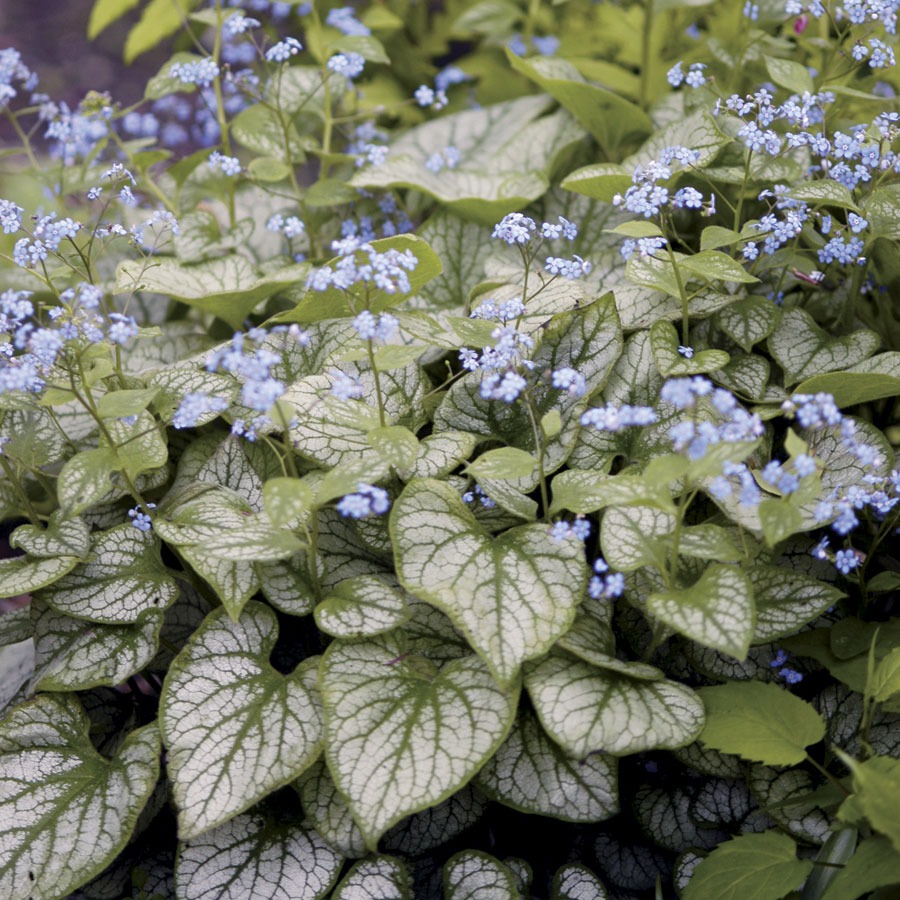Brunnera “Jack Frost”
Article by Dyro Web

Those of you who have been following my Facebook posts know that I was lucky enough to be invited by the Tourism Authority of Thailand to visit some of that amazing country’s gardens and attractions. Fresh from that trip, I’m all agog with ideas for adding a touch of Thai to my own garden.
Once I got over seeing beds planted with amaryllis, bromeliads and cycads (okay, the truth is, I never did get over seeing these “houseplants” grounded in the earth…) I noticed that every garden seemed to have a little house on stilts or pillars nestled into a nook or corner. Often built of sturdy teakwood, each house was laden with fresh, colourful floral “offerings” made of marigolds, orchids and roses. Many of these houses held pots for smoldering sticks of incense while others were even fitted with little electrical lights. Our guide Tippie told the story of a recent lottery winner who extravagantly outfitted his garden house with air conditioning!
What was this distinctive Thai landscaping custom all about? Too small (and impractically high) to be tool sheds and too large for bird feeders, it was clear these little houses were important garden structures. They often stood at the end of well-trodden pathways where they commanded a certain amount of attention.
These, explained several guides on the trip, were spirit houses. A remnant of a form of spirit worship that predates Buddhism and that endures to permeate everyday life in modern, religiously tolerant Thailand, spirit houses are meant to placate the gods of the land, and if you care about your property, you’ll take great pains to site your spirit house where it can offer the best protection.
Rituals, often elaborate and involving the help of a Brahmin priest or a monk as well as consultations with the landowners’ horoscopes, guide the placement, colour and design of the spirit house. There are some basic rules: never place one under the eaves of the house and never point it towards a toilet (or “happy room” as our guide Tippie calls it!). Once erected, daily offerings ensue, to charm, entertain and otherwise placate the gods of the land in the belief that contented spirits will bring prosperity, health and happiness to the land and its owners.
Although I might forego the ritual (it’s difficult to find a saffron-robed monk in Toronto), the idea of constructing a spirit house in my garden is appealing. I would gladly bedeck it with offerings in the hope that my lovely double bloodroot will bloom for another season; that the mature tree peony I brutishly moved last spring regains its former vigour; and that the Zone 7 erodium adapts to my Zone 6 garden.
And anyway, a spirit house would be a handy place to tuck away a trowel…
Leave a Reply
You must be logged in to post a comment.